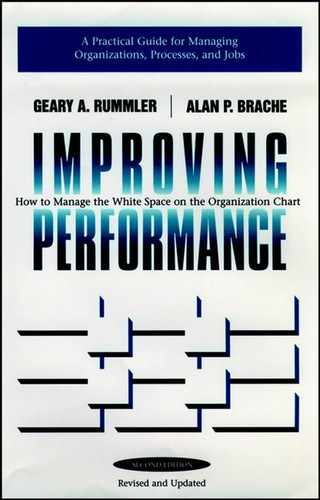15.3. Designing Training
The "vacuum" view of performance leads to subject-matter-driven training and development. Training programs tend to address the hot topic of the day, or perceptions of what "they" need.
Here is a typical example of a subject-matter-driven training design. An HRD department was asked to train a large group of new people, whose job was to interview applicants for unemployment compensation. The design assignment was given to Matthew, a training specialist. He began by identifying subject matter areas relevant to the new interviewer. He examined existing bodies of knowledge concerning interviewing techniques and psychology. Matthew identified interviewing technique subject matter areas, such as developing the types of questions to ask, using questioning and probing skills, and interpreting answers. While exploring interviewing psychology, he uncovered subject matter areas that focused on an interviewee's behavior and personality makeup. After a considerable amount of apparently relevant subject matter research, Matthew developed a three-day course that made extensive use of videotape and role-play exercises.
The Three Levels view, by contrast, leads to performance-driven training and development based on the needs-analysis approach already described. Performance-driven training design (which fits well with the techniques described by others as Criterion-Referenced Instruction or Learner-Controlled Instruction) suggests the approach used in the following example. Gwen, the educational technologist who was given the new-hire interviewing-training assignment, began by determining what the new interviewer was expected to do on the job. Specifically, she identified all the decisions the interviewer was expected to make, particularly the final decision (output) of the typical interview. From this analysis, Gwen learned that in all cases the interviewer's output was to decide where to refer the interviewees. There were four possibilities: Office A, where the applicants would receive unemployment compensation; Office B, where the applicants would be referred to jobs (because they were able to work and didn't qualify for compensation); Office C, where the applicants were interviewed by a psychiatrist (because they had psychological problems that would interfere with job placement); and Office D, where they were interviewed by the chief interviewer (because the applicants presented special problems or didn't clearly belong in one of the other three offices). On the basis of this information, Gwen concluded that the task of the new interviewers was primarily one of categorizing, or sorting. They were expected to decide which of the four offices to send applicants to. Thus, she decided that the subject matter of the training should consist of the following steps, presented in this sequence:
The four alternatives for the final decision
The criteria for each alternative (the conditions under which an applicant should be sent to each office)
The information required to make the final decision, on the basis of the criteria
Techniques for asking questions to elicit the required information
The resulting one-day course did not require elaborate instructional design or expensive media. It concentrated on teaching the interviewers to discriminate among the offices to which various applicants could be sent.
Without going through an exhaustive or overly formal analysis, Gwen addressed all Three Levels: she determined what the organization needed from the interviewer, she examined the interview process, and, on the basis of this information, she identified the skills and knowledge needed by the performers. Unlike Matthew, who based his course on an academic and generic model of interviewing skills, Gwen let the subject matter of the course be driven by the real world of her organization. Gwen's design was based on performance.
